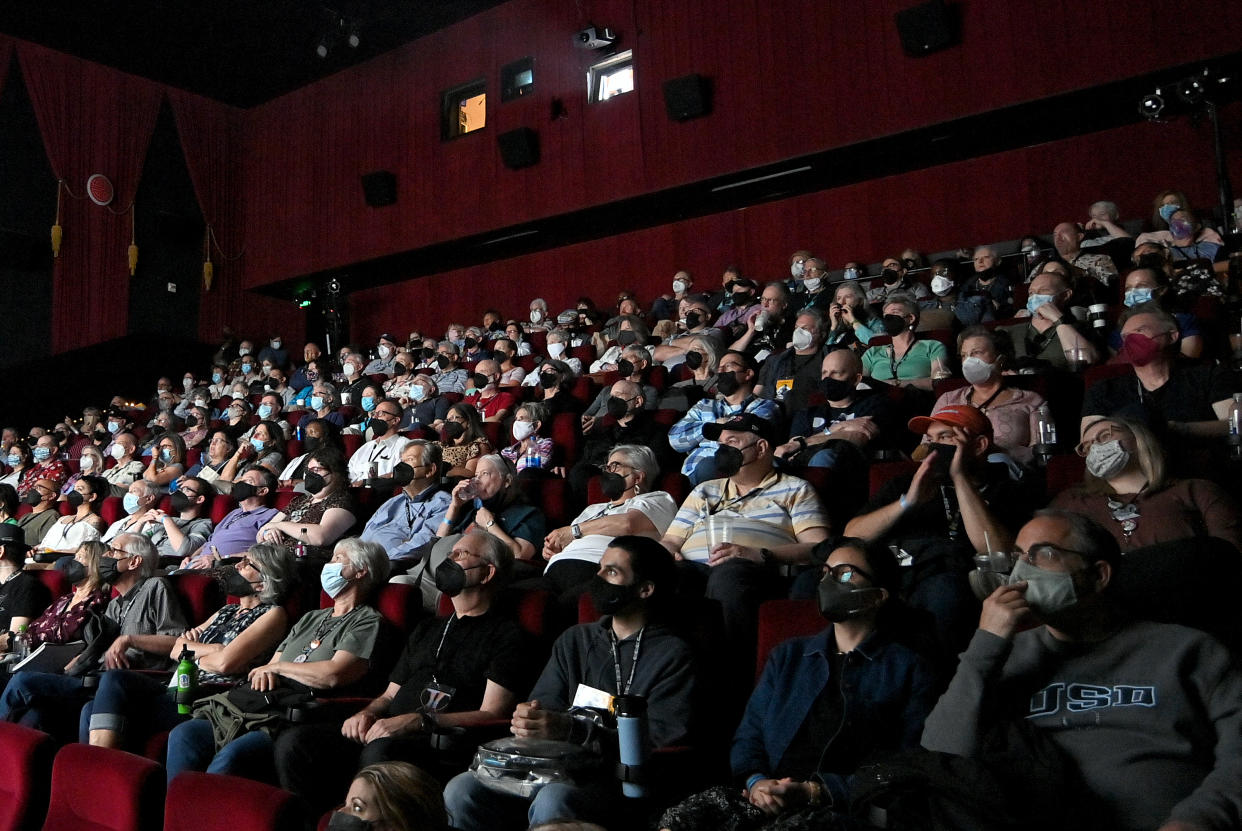David Zaslav Loves Turner Classic Movies, but Is That Enough to Save Them? (Column)

Last week the National Society of Film Critics honored “TÁR” as the year’s best film, but it also handed out a prize that doubled as a cry for corporate investment. As one this year’s “Film Heritage Awards” recipients, Turner Classic Movies received a citation for its “rich array of programming that ranges deep and wide in the history of cinema, a service too easily taken for granted by audiences and worthy of the utmost care and attention from its corporate owners.”
As an NSFC member, I was happy to vote in favor of this award. Few curatorial entities preserve cinema history while presenting it to a mass audience; of those, only TCM has the backing of a major media company. That’s why I fear we could lose it — and why the broader efforts to preserve film history also face peril.
More from IndieWire
The economy, shaky box office, and a more somber assessment of streaming has forced every media company to reexamine its costs and strategies. I don’t know TCM’s numbers, but it’s certainly not designed to be a profit center like HBO Max or Warner Bros. Pictures. Instead, TCM survived for nearly 30 years as a modest outlet that features everything from staples of the Hollywood Golden Age to international arthouse sensations and ensured that generations of cinephiles maintain a relationship with the medium’s past.
During the previous corporate era of the company, AT&T executive John Stankey decided that TCM’s future lay in a streaming presence on HBO Max. Under current WarnerBros. Discovery CEO David Zaslav, HBO Max and Discovery+ will become a single streaming service this spring — and TCM will somehow fit into that. But even the people working there don’t have much to go on.
“That’s a larger company timeline as a spring thing, but that’s all any of us know,” TCM’s General Manager Pola Changnon told me this week. “The big question is, ‘What is the future of any network brand?’ What we’re looking to do in the platforms available in this company is leverage our curation in whatever format that might be.”
Like almost every other part of WBD, TCM faced layoffs last year. A WBD rep declined to offer specifics, but said that its cutbacks were commensurate with those across the company. In our conversation, Changnon projected confidence about support for TCM coming from the top. She was on lunch break from a retreat Zaslav hosted this week for new organizational leadership across the company and said the executive expressed enthusiasm for TCM early in the merger.
“When he first met me, right after the deal had closed in April, he said that he had TCM on in his office all the time,” she said. “I thought well, sure, but his assistant said, ‘No, he really does.’ Now I know it to be true because everyone talks about it.”
She has grown used to the need to justify TCM, which initially grew out of Ted Turner’s acquisition of MGM’s library. Now, TCM programming largely stems from licensed material from other sources. “TCM is a unique brand within the portfolio,” Changnon said. “Sometimes that can be tricky. We can be lost in the shuffle. Everyone else is about ad sales and new programming. We feel fortunate that in this new world at the top someone cares about us.”
Of course, empathy will only get you so far. Prior leadership killed off the TCM-Criterion joint venture FilmStruck. In the new regime, the TCM hub on HBO Max is curated by HBO Max staff, not TCM. Internal support stems from the continuing impression of a “reputational asset” that also serves as a platform for Warner Bros.’ extensive classic film library.
In April, the TCL Chinese Theatre in Hollywood will host the 13th annual TCM Classic Film Festival — a popular event that usually sells out. This year it also celebrates the studio’s centennial, which in a way means the event turns into a marketing spend. “The capital-C company is excited about it, leaning into it, and looking forward to building that experience,” Changnon said.
She added Zaslav was so moved by TCM’s “In Memoriam” tribute to classic film figures who died in the past year that he insisted it air on all of their other networks. What happens when TCM isn’t a network, because networks don’t exist?
We say goodbye to the artists we lost this year. While they are no longer with us, their contributions to film and storytelling will continue to make us dream, take us to new places, and inspire generations to come. #TCMRemembers
“The Night We Met” by @LordHuron pic.twitter.com/W2RMOkv38O
— TCM (@tcm) December 21, 2022
“Obviously the value of TCM is in its curation,” Changnon said. “It’s a discovery engine.”
Yet for many, TCM’s value was tied to its presence as a linear TV channel: Flip it on, discover a Roy Rogers Western or an obscure Swedish silent film, repeat. That organic relationship built entire knowledge bases of film history. Stories of TCM superfans abound, including one oft-cited rumor that Martin Scorsese keeps the network going in the background of his editing room, sometimes on silent, so the movies are always with him. But it’s an experience that doesn’t correspond with the new paradigm of the streaming universe.
Sources tell me that after FilmStruck died and the future of TCM seemed in doubt, Paul Thomas Anderson went so far as to ask his CAA agent Bryan Lourd if there was a way to buy the brand and spin it off as an independent entity. For now, TCM gets to stick around and prove its worth, but that keen awareness of its circumstances — hey, the boss likes it! — underscores how few services provide a portal to film history.
At a symposium during the Cannes Film Festival last year, Guillermo del Toro confessed that he pirated older movies at home since so many were hard to track down. Sitting next to him, Gaspar Noé agreed. “These days, it’s platforms or piracy,” he said. Most people won’t bother to look — and as a result, the concept of “classic film” recedes from their lives.
Access remains a systemic issue. Few American cities beyond New York have easy access to world-class repertory programming outside the home. Criterion and TCM are critical resources for everyone else, but they can’t show it all; studios have grown more protective of their own libraries. Disney is often cited as the worst offender, hoarding its 100-plus years of cinema even though it posts select few on Disney+ (and hardly anything on Hulu). Other warning signs abound. Last summer, Paramount rescinded a booking of a 70mm print of “Top Gun” when the studio decided it needed to focus all attention on the sequel. The assumption is clear: It’s the new movies that make the money.

Paramount
There’s a profound fallacy to the assumption that any library is better off buried. The Paramount+ library offers a bounty of riches, from “Night of the Living Dead” to “Once Upon a Time in the West,” but it lacks a TCM-caliber curatorial identity. Libraries without curators are like deserts without roads: You can find your way through, but most people wouldn’t know where to start.
Of course, beyond the realm of big streamers, there’s no shortage of advocacy for restoration. On the non-profit side, Scorsese’s World Cinema Project continues to invest heroic effort into preserving the work of international filmmakers, many of whom wouldn’t be known at all without the help. MOMA’s “To Save and Protect” series (now ongoing until early February) provides annual proof that efforts to maintain and reassemble aspects of film history contribute to an ongoing understanding of its many underappreciated chapters.
These endeavors don’t touch the calculus of the competitive streaming world. Classic film libraries can enrich big-streamer ambitions, but few have sorted out how to take advantage of what they have. In one of the more discouraging instances, Criterion’s library lived on Hulu for five solid years — but that relationship soured because the streamer allegedly grew frustrated with what it saw as anemic viewing numbers.
The truth is even the greatest film libraries can’t sit on a streaming platform and wait for audiences to gobble them up. They need to be presented in tandem with the hits of the moment, benefiting from a strategy that engages audience curiosity. And that requires a business model that takes into account the art of curation. Plenty of people are qualified for the role: Last year, I wrote about the troubled market for film festival programmers, particularly in the U.S. where few can hold down full-time jobs. Here they may hold the key to a recurring challenge across the media landscape. Don’t expect subscribers to do the dirty work on their own.
As usual, I invite readers to share their feedback and provide your own take on the challenges: eric@indiewire.com
If you’re attending this year’s Sundance Film Festival, I hope to see you in the snow next week.
Last week’s column on the potential of making cult movies elicited some intriguing replies on Facebook. I’m sharing a few below.
One just can’t make a cult classic out of the gate. I’ve been involved with a few films that have garnered decent tribal cultish followings but the landscape of how true cult titles develop over time is long gone. Even ones that should gain sizable cults just don’t because the mechanics of how a ‘Lebowski’ built its legacy are dust in the wind. Also, most investors I know don’t want a film that may pay off 20 years after it’s released. … The real test to see if there are new cult films is to see find one that was DOA on arrival but has built a fan base and then see if it draws an in-cinema crowd when screened (not at a rep house where fans of the rep cinema turn up for anything sold as a ‘must-see new cult classic’). … This is why FilmRise paid more than everyone else for ‘Greasy Strangler,’ because they believed in the long and cultish shelf life of the film. But most in acquisitions can’t see that far ahead because of how fluid the landscape is at the moment. Everything must work out of the gate. Risk adverse is an understatement from buyers these days.
—Ant Timpson, producer (“The Greasy Strangler”) and filmmaker
I used the term cult in the catalog description of a premiere title at TIFF and the producer (a friend) asked me to strike it because he felt it denotes commercial failure and they were a sales title. He was worried it would put off distributors.
—Colin Geddes, former TIFF Midnight Madness programmer
A24 (at its worst) is cult-by-design, meaning, weird enough to stand out but normal enough to not actually be maudlin.
—Richard Brody, film critic, The New Yorker
Check out earlier columns here.
Best of IndieWire
31 Queer and Homoerotic Horror Movies, from 'Psycho' and 'Hellraiser' to 'Fear Street' and 'Titane'
Wes Anderson Movies, Ranked: 'Bottle Rocket' to 'Asteroid City'
Sign up for Indiewire's Newsletter. For the latest news, follow us on Facebook, Twitter, and Instagram.

